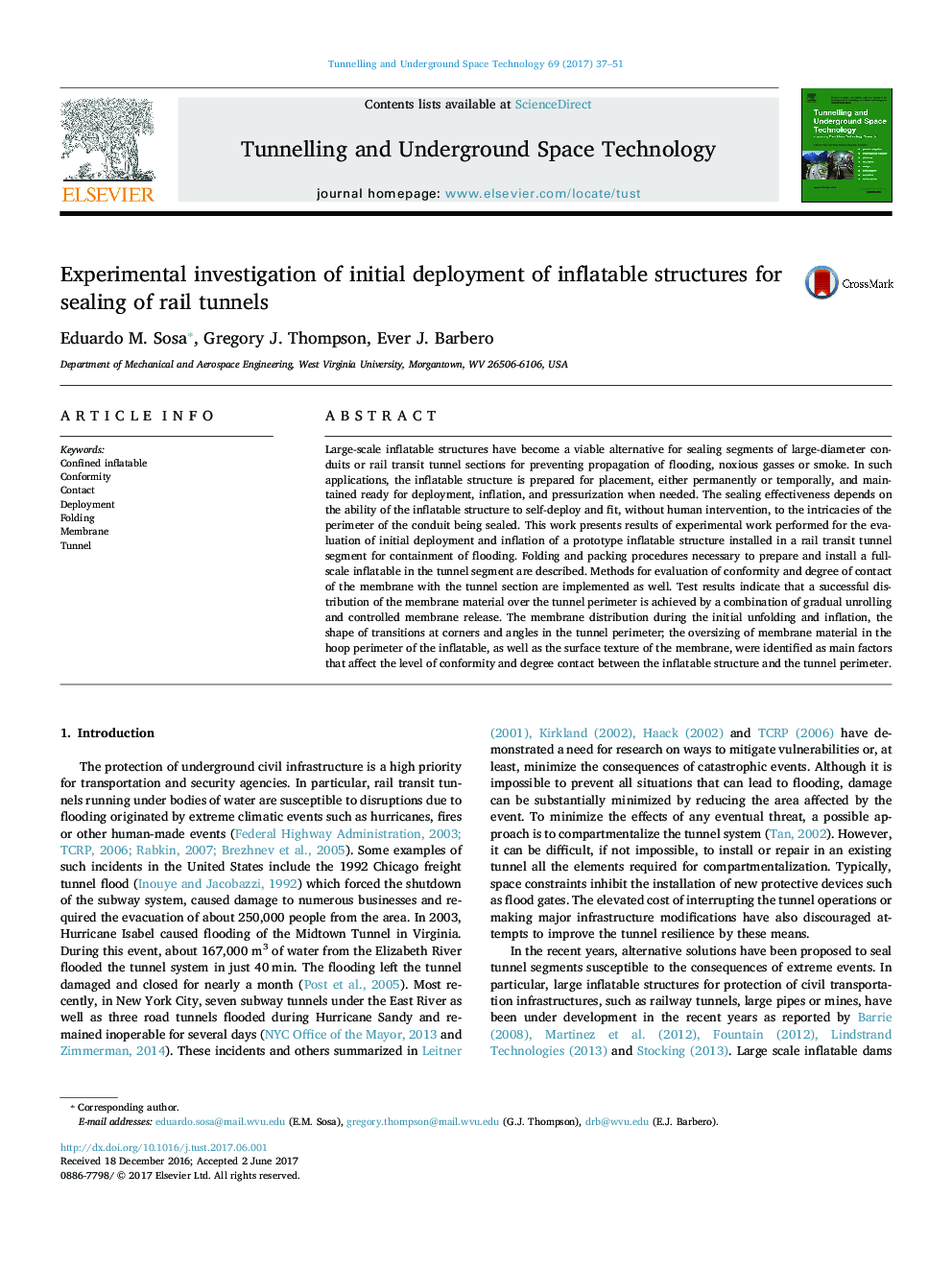| Article ID | Journal | Published Year | Pages | File Type |
|---|---|---|---|---|
| 4929280 | Tunnelling and Underground Space Technology | 2017 | 15 Pages |
Abstract
Large-scale inflatable structures have become a viable alternative for sealing segments of large-diameter conduits or rail transit tunnel sections for preventing propagation of flooding, noxious gasses or smoke. In such applications, the inflatable structure is prepared for placement, either permanently or temporally, and maintained ready for deployment, inflation, and pressurization when needed. The sealing effectiveness depends on the ability of the inflatable structure to self-deploy and fit, without human intervention, to the intricacies of the perimeter of the conduit being sealed. This work presents results of experimental work performed for the evaluation of initial deployment and inflation of a prototype inflatable structure installed in a rail transit tunnel segment for containment of flooding. Folding and packing procedures necessary to prepare and install a full-scale inflatable in the tunnel segment are described. Methods for evaluation of conformity and degree of contact of the membrane with the tunnel section are implemented as well. Test results indicate that a successful distribution of the membrane material over the tunnel perimeter is achieved by a combination of gradual unrolling and controlled membrane release. The membrane distribution during the initial unfolding and inflation, the shape of transitions at corners and angles in the tunnel perimeter; the oversizing of membrane material in the hoop perimeter of the inflatable, as well as the surface texture of the membrane, were identified as main factors that affect the level of conformity and degree contact between the inflatable structure and the tunnel perimeter.
Related Topics
Physical Sciences and Engineering
Earth and Planetary Sciences
Geotechnical Engineering and Engineering Geology
Authors
Eduardo M. Sosa, Gregory J. Thompson, Ever J. Barbero,
